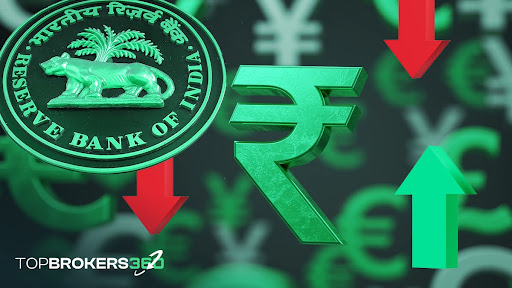India operates a managed floating exchange rate regime. This system, in place since March 1993, signifies a move towards a market-determined exchange rate. However, the Reserve Bank of India (RBI) actively participates in the currency market to manage volatility and influence the exchange rate.
Understanding the Managed Floating Exchange Rate
Under a managed floating exchange rate, the exchange rate is primarily determined by market forces of supply and demand. However, the central bank (RBI in the case of India) intervenes to stabilize the currency. This intervention can involve buying or selling foreign currency to prevent excessive fluctuations.
Key Characteristics
Market Influence: The exchange rate is largely determined by market dynamics.
RBI Intervention: The RBI actively trades in the currency market to manage volatility and influence the exchange rate.
Managed Volatility: The stated goal of the RBI’s intervention is to contain volatility in the exchange rate.

De Facto vs. De Jure
It’s important to distinguish between the de jure (official) and de facto (actual) currency regime. While India officially claims a managed float, some studies suggest that the RBI’s active intervention might indicate a “fear of floating,” where the central bank is hesitant to allow the exchange rate to move freely.
RBI's Role and Intervention
The RBI’s intervention in the foreign exchange market is a critical aspect of India’s exchange rate regime. The central bank uses tools such as buying and selling US dollars and Rupees to prevent currency appreciation.
From February to October 2022, the RBI sold $105 billion in reserves to prevent depreciation after the US Federal Reserve started to raise interest rates aggressively to fight inflation.
Historical Analysis
An analysis of India’s exchange rate regime from 2000 to 2020 identifies four specific regimes differentiated by the degree of flexibility. This analysis also reveals that the RBI often intervenes asymmetrically, predominantly buying dollars when the rupee faces appreciation pressure.
Exchange Market Pressure
Exchange Market Pressure (EMP) measures the pressure on the exchange rate, which is either resisted through foreign exchange market intervention or relieved through an exchange rate change. In a floating exchange rate regime, the exchange rate freely fluctuates according to market forces. In a managed exchange rate regime, the central bank intervenes in the foreign exchange market to absorb the EMP.
Conclusion
India’s exchange rate regime is a managed float, characterized by market-driven exchange rates and central bank intervention. The RBI plays a crucial role in maintaining stability and managing volatility in the currency market. While the official stance is a managed float, the extent of RBI intervention suggests a more complex reality, requiring ongoing analysis to fully understand the de facto exchange rate regime.
